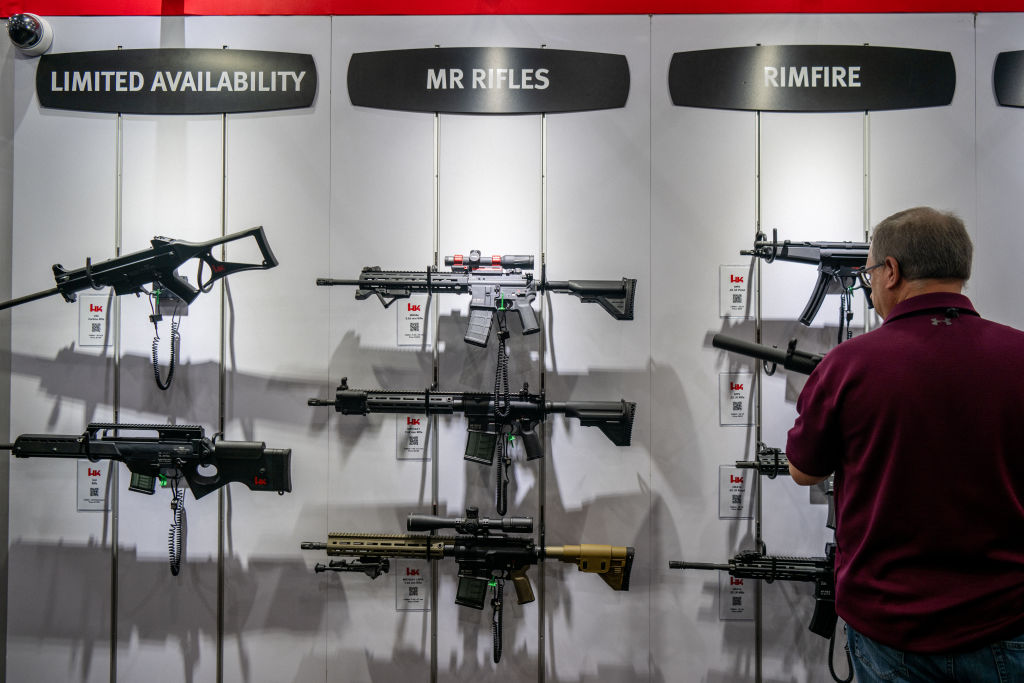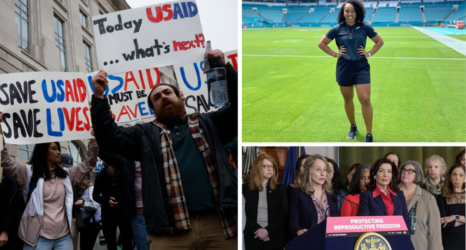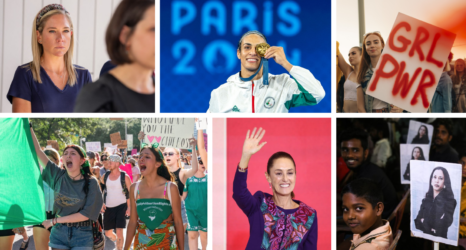Guns are woven deeply into cultural narratives about American masculinity.

Amidst outpourings of heartache, grief and outrage about the latest gun massacre, why are so few voices in mainstream American media talking about the gender issues at the heart of these incidents? As the U.S. experiences yet another mass murder, what is so hard about saying—out loud—that the overwhelming majority of these killings are done by boys and young men, and then going a little deeper and asking why?
Since the spring of 1998, media coverage of these shootings—with just a few exceptions—has followed an embarrassingly predictable and superficial script that imposes gender neutrality on a highly gendered phenomenon. It’s remarkable how many gender-neutral terms commentators come up with to describe the perpetrators of these heinous crimes: “shooter,” “18-year-old,” “loner” “killer,” “terrorist,” “student,” “teenager,” “young person,” “armed individual.”
People think it’s so obvious the shooters are young men that there’s literally no point in saying so. In that sense, ‘gunman’ is internally redundant; everyone knows that ‘man’ follows ‘gun.’
The one gendered term people do often use is “gunman,” a word whose very constituent parts—gun/man—offer a clue as to why gender-neutral terms are so popular on this topic. People think it’s so obvious the shooters are young men that there’s literally no point in saying so. In that sense, “gunman” is internally redundant; everyone knows that “man” follows “gun.”
One way to think about the near-invisibility of gender in this debate is to consider the word “gunwoman.” The awkward but revealing dictionary definition of this uncommon word is “a female gunman.” The need for such a word barely exists—because in 98 percent of mass shootings, the murderer is a man.

Instead, media coverage of mass killings tends to emphasize a range of other causative factors. The main ones are “mental illness” and the easy availability of military-style semi-automatic weapons, facilitated by the successful efforts of gun industry lobbyists and right-wing politicians who continue to block basic gun safety policies.
The New York Times did run a front-page article on June 2 that uncharacteristically discussed some of the reasons why the shooters are almost always male—in a story whose headline and central theme was the age of the shooters.
Much more common is the lack of any attempt to analyze gender in commentary about shootings. This was exemplified starkly in a 2019 op-ed in Education Week, “What School Shooters Have in Common,” written by James Densley and Jillian Peterson, whose work has circulated widely since the Uvalde massacre that left 21 dead.
The two academics have developed a remarkable data base of school shootings dating back to 1966. They found that school shooters typically have four things in common:
- They suffered early childhood trauma.
- They were angry or despondent over a recent event, sometimes resulting in suicidality.
- They studied other shootings online.
- They possessed the means to carry out the attack.
But like most analysts, the authors didn’t highlight or examine gender as something almost all the shooters have in common. They did mention it in a subsequent paragraph, in which they suggested—helpfully—that schools can adopt curricula focused on “teaching positive coping skills, resilience, and social-emotional learning, especially to young boys.”
Then they buried the most critical data point at the end of the paragraph, in parentheses—“(According to our data, 98 percent of mass shooters are men)”—and said nothing further about it.
What difference would it make if the discourse on mass killings routinely included discussion about the socialization of boys in a violent culture, along with developments over the past generation in our understanding of the emotional and relational lives of boys and young men?
What if commentators spoke thoughtfully about topics like trauma and shame, and the often-limited ways in which boys and young men are taught to deal with their own victimization—at home or in school peer cultures—as well as how to handle difficult emotions such as disappointment, grief, loss and self-loathing? At the very least, such a focus would go a long way toward helping us understand why these tragic events continue to occur.
What difference would it make if the discourse on mass killings routinely included discussion about the socialization of boys in a violent culture?
It might even help move the needle on achieving legislative progress on gun policy. How? The more honest we can be about how easy our society has made it for aggrieved, emotionally fragile and volatile young men to harm others in the process of externalizing their pain and enacting revenge fantasies, the more it exposes the irresponsibility and selfishness of those who prioritize the “freedom” to possess high-powered weapons over the safety of our children.
In fact, a vigorous debate about masculinity and shootings would move beyond a fixation on the psychology of young men who commit these horrible crimes and turn a gendered lens on another part of the problem: the men whose very identity resides in seeing themselves as the “good man with a gun,” who can protect others from the “bad man with a gun.”
We can’t have a productive national debate about gun policy if we are not willing to talk about the ways in which guns are woven deeply into cultural narratives about American masculinity. Heavily armed rugged individualism—reinforced by glamorous portrayals in entertainment media—continues to have immense influence over the identities of millions of American men—especially, but not exclusively, white men.
In recent years, advocates and activists in the movements against domestic violence—with the assistance of some brilliant feminist journalists—have drawn attention to the many links between misogyny and mass killing events. The general public is increasingly aware of what those in the movement have long known: Well over half of men who commit mass killings have a history of domestic or family violence.
One consistent thread that connects many of these men—other than their access to powerful firearms—is a history of assaulting girlfriends, wives and female family members, or sharing misogynistic views online. This suggests that one way to prevent mass killings is to address some of the root causes of men’s violence against women, particularly in families, in addition to every other type of family violence, including child abuse.
One of those root causes is something gender violence perpetrators and mass shooters often have in common: a feeling of aggrieved entitlement, accompanied by a fear of being seen as soft, weak, feminine or “emasculated.” Thus part of the answer lies in creating more egalitarian, adaptive and realistic definitions of “manhood,” especially definitions that do not valorize violence as a means of achieving something of value.
Part of the answer lies in creating more egalitarian, adaptive and realistic definitions of ‘manhood,’ especially definitions that do not valorize violence as a means of achieving something of value.
The more we can provide young men with effective tools and coping skills to navigate life’s inevitable difficulties, the less often we will have to live with the results of their turning to violence—against themselves and others—as the solution to those very real challenges.
But as long as men, young and old, have easy access to high-capacity killing machines at the same time their society furnishes them with endless heroic masculine narratives about redemptive violence, the next tragedy is always going to be just around the corner.
This article was originally published on June 6, 2022.
U.S. democracy is at a dangerous inflection point—from the demise of abortion rights, to a lack of pay equity and parental leave, to skyrocketing maternal mortality, and attacks on trans health. Left unchecked, these crises will lead to wider gaps in political participation and representation. For 50 years, Ms. has been forging feminist journalism—reporting, rebelling and truth-telling from the front-lines, championing the Equal Rights Amendment, and centering the stories of those most impacted. With all that’s at stake for equality, we are redoubling our commitment for the next 50 years. In turn, we need your help, Support Ms. today with a donation—any amount that is meaningful to you. For as little as $5 each month, you’ll receive the print magazine along with our e-newsletters, action alerts, and invitations to Ms. Studios events and podcasts. We are grateful for your loyalty and ferocity.
Read more:












